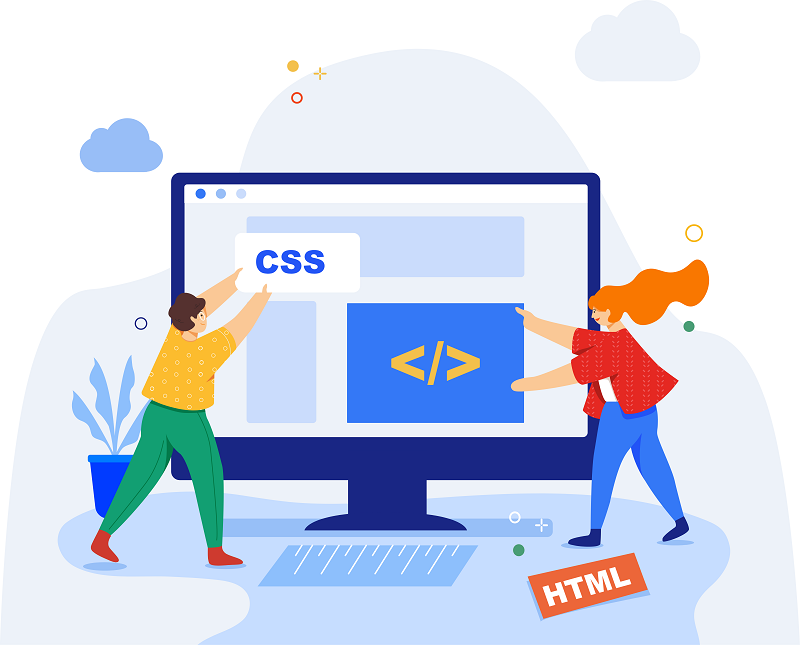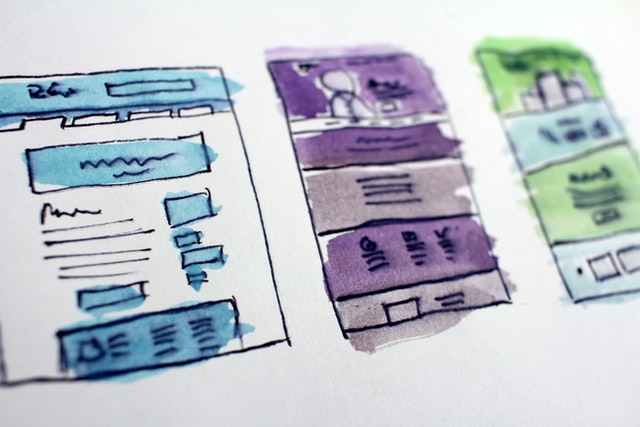
July 25, 2022, 0 Comments
14 Mistakes Developers Make When Building Web Applications

What are the biggest challenges with creating an application that users love? The development process! Creating a successful application involves much more than just coding and designing. You need to take into account your users’ needs, the business goals, and the target audience. And this is just the beginning. Your job isn’t over when you finish coding or testing your app — there are many other factors involved in developing a successful application. However, many developers make some common mistakes that can hinder their efforts to create a user-friendly application.
Don’t ignore usability in favor of design

Good design is important to attract new users, but functionality is even more crucial. Good design without functionality is like a sports car without an engine. It looks nice but doesn’t go anywhere. When designing your application, don’t get so caught up in the aesthetics that you forget to think about the functionality. Make sure the design works with the business goals and user needs.
For example, if you’re building an application where users need to fill out a form, make sure the design allows them to do this easily. The design should be clear, concise, and easy to understand. It should guide the user through the process. Don’t make your users work harder than they have to. They’ll quickly become frustrated and abandon your app — and you’ll be lucky if they take the time to let you know why!
Don’t build everything from scratch
Some developers think building everything from scratch is the best way to create an application. However, doing so can be costly and time-consuming, and it can create an application that isn’t tailored to your users’ needs. Instead, you should pick the right platform and tools, including an existing database and software development kit (SDK). When choosing a platform, make sure it’s compatible with your business goals and your planned audience.

Avoid building your application on a platform that only has a few users or that is incompatible with your business goals. You also want to consider the available tools, such as a database and SDK, that are compatible with the platform you’ve chosen. For example, if you’re developing an application for a real estate company, you might want to consider a database and SDK designed for the real estate industry. This way, you can build an application that is tailored to the industry’s specific needs.
Don’t neglect user feedback and usability tests
If you’re building a new application, you should conduct some usability tests with users to make sure the design is clear and easy to navigate. The tests can help you identify any issues with the current design and what could be improved. Don’t be afraid to test your application with a few users and make the necessary changes.

This will save you time and money in the long run. It’s also important to listen to your existing users’ feedback about their experience with the app. You can implement changes based on this feedback by adding new features or improving the design. For example, if your users are frustrated because they don’t know how to use a certain feature, you can add a pop-up message with a simple explanation. This is a simple change, but it can make a big difference for your users.
You don’t fully understand your users or their needs.
There’s no way to know what users want until you build an application and let them use it. That’s why you need to do research, interview users, and conduct usability tests before building your app. You need to ask your users questions, like what they want from your application and how they prefer to use it. This can help you determine the right design and features to include in your application.

You also want to observe your users as they use your application and see how they use the features. This can help you identify any problems with the design and suggest changes. If you don’t fully understand your users or their needs, you’ll create an application that doesn’t meet their expectations. This can lead to frustration and abandonment — and it can also cost you time and money. Be prepared to spend more time (and money) if you need to revamp the design or make changes based on user feedback.
Developing a custom User Experience (UX) is hard
If you want to create a custom UX for your application, don’t expect it to be an easy process. Creating an original UX is challenging because you need to consider many factors, such as the design and features. You also have to make sure the UX is compatible with your platform and that it meets your users’ needs and expectations. This is especially hard if you’ve never done it before. There’s a good chance you’ll make some mistakes or misjudgments along the way, which can lead to issues with your application. This can also cause you to spend more time and money than you expected. If you’re not experienced with UX development, you should consider using an existing platform and UX. You can also build an application that incorporates an existing UX. This gives you the flexibility to change or modify the UX as necessary, but it also keeps the development process easier.
There’s a good chance you’ll make some mistakes or misjudgments along the way, which can lead to issues with your application. This can also cause you to spend more time and money than you expected. If you’re not experienced with UX development, you should consider using an existing platform and UX. You can also build an application that incorporates an existing UX. This gives you the flexibility to change or modify the UX as necessary, but it also keeps the development process easier.
Be careful with your deadlines

Many developers set aggressive deadlines — sometimes too aggressive. While it’s important to meet your target dates, you don’t want to do so at the expense of quality. Making sure the application is fully functional and well built can take longer than expected. If you’re in a rush, you might make some mistakes or miss some important design elements, which could lead to issues with your application.
If you meet your deadlines but the application isn’t fully functional, you’ve failed. This can not only lead to frustration among your users but also make potential customers hesitant to use it. Instead of rushing, push back the deadlines to give yourself enough time to build a quality application. This will help you avoid issues and make sure the application meets your users’ needs.
Don’t skimp on the user research
There is a lot you can learn from user research. This is your chance to ask your users questions and find out what they want from your application. However, many developers don’t engage in enough research. They skip this crucial step and jump straight into designing and building the application.
Even if you’ve done some usability tests, you still need to do more research. This will help you better understand your users, their needs, and how they use your application. It can also help you identify any issues with the design and suggest changes. You can then implement these changes to make the application more functional and user-friendly. It’s also important to keep researching your users as you build the application. This will help you identify any problems with the design or issues with the application and suggest changes.
You don’t have enough testers
Many developers want to launch their application immediately after building it. However, this is a mistake. Before you launch your app, you need to get feedback from your users to make sure it’s working properly. You don’t want to bring your application to the public before it’s ready.

You also don’t want to find out about the issues after the application is released. This is why you need to test your application with real users before launching it. This will help you identify any problems with the design and make necessary changes before launching. You can also use this information to create an action plan for improvements. For example, if you notice that certain features aren’t easy to use, you can prioritize improvements based on user feedback.
Your product is too complex
If you’re building a new application, make sure it solves a problem and meets your users’ needs. If it doesn’t, your application is likely too complex. A complex application can confuse your users and make it hard for them to use your product. It can also take longer to navigate through your application and perform tasks. You want to make sure your application is easy to use and navigate.

Don’t try to build everything into one application. Instead, break up your application into smaller, manageable pieces. This will help you focus on each feature and make it easier for you to create a functional application. It will also help you avoid overcomplicating your application and making it too complex for your users.
Lack of Vision and Communication
Before you even think about creating an application, you should have a clear vision for what your product will look like, what functionality it will have, and how it will improve customers’ lives. However, many developers don’t even attempt to communicate their vision to anyone.
This lack of communication will only create more problems later on. To prevent this from happening, you need to start collaborating with other team members on your application as soon as possible. Start brainstorming, and create a document that covers all your product ideas. This way, you’ll ensure that everyone on your team is on the same page and shares the same vision for your product. This will also help you avoid unnecessary communication problems as your project grows, since you’ll have one central location where you can store all your ideas.
Poor User Interface and User Experience
The UI/UX (user interface and user experience) of your application is what drives user engagement and retention. Your application needs to be easy to navigate, intuitive, and visually appealing. If your application has a poor UI/UX, your users won’t enjoy using it and will quickly lose interest in it.

If users don’t like your application, they’ll quickly disengage from it and stop using it. This will have a negative impact on your application’s conversion rates and retention rates. If your application has a great UI/UX, your users will enjoy using it and be more likely to return. Your application’s UI/UX will also be more likely to receive positive reviews. You can improve your UI/UX by conducting user research, creating wireframes, or user testing your app.
Incorrect Pricing Strategy
A pricing strategy is simply a method to determine the price of your product. It’s important to select a pricing strategy that will give you a competitive advantage and help your application achieve growth. However, many developers fail to select a pricing strategy for their applications.

This can have a negative impact on your application’s growth, revenue, and retention rates. If your application’s pricing strategy isn’t ideal, it won’t generate as much revenue as it could. This will make it more challenging for your app to generate profits for your company. It’s recommended to conduct a pricing strategy analysis to ensure that you select the best pricing strategy for your application.
Excessive Marketing Without Knowing Your Audience
Marketing is a critical process for every business that aims to generate a profit. However, many developers don’t conduct proper marketing research, and they fail to understand their target audience. If you don’t know who your target audience is, it’s extremely challenging to market to them. If you try to market to anyone and everyone, you’ll likely make many mistakes that will hurt your efforts.

You need to start by conducting research on your target audience and then creating marketing campaigns that appeal to them. If you don’t know who your target audience is, it’s challenging to market to them. You should conduct research on your target audience, and then create marketing campaigns that appeal to them. Once you understand your target audience, it’ll be easier to create a marketing strategy that drives growth.
Final Words
If you want to create an application that generates a significant amount of revenue, it’s important that you avoid these mistakes. By avoiding these mistakes, you’ll increase your chances of creating a successful application and improving your company’s profits. Remember, developers create products; it’s important to remember that creating a product that generates profit is challenging. It requires more than just coding and designing — it requires collaboration, communication, and research.

Recent Comments